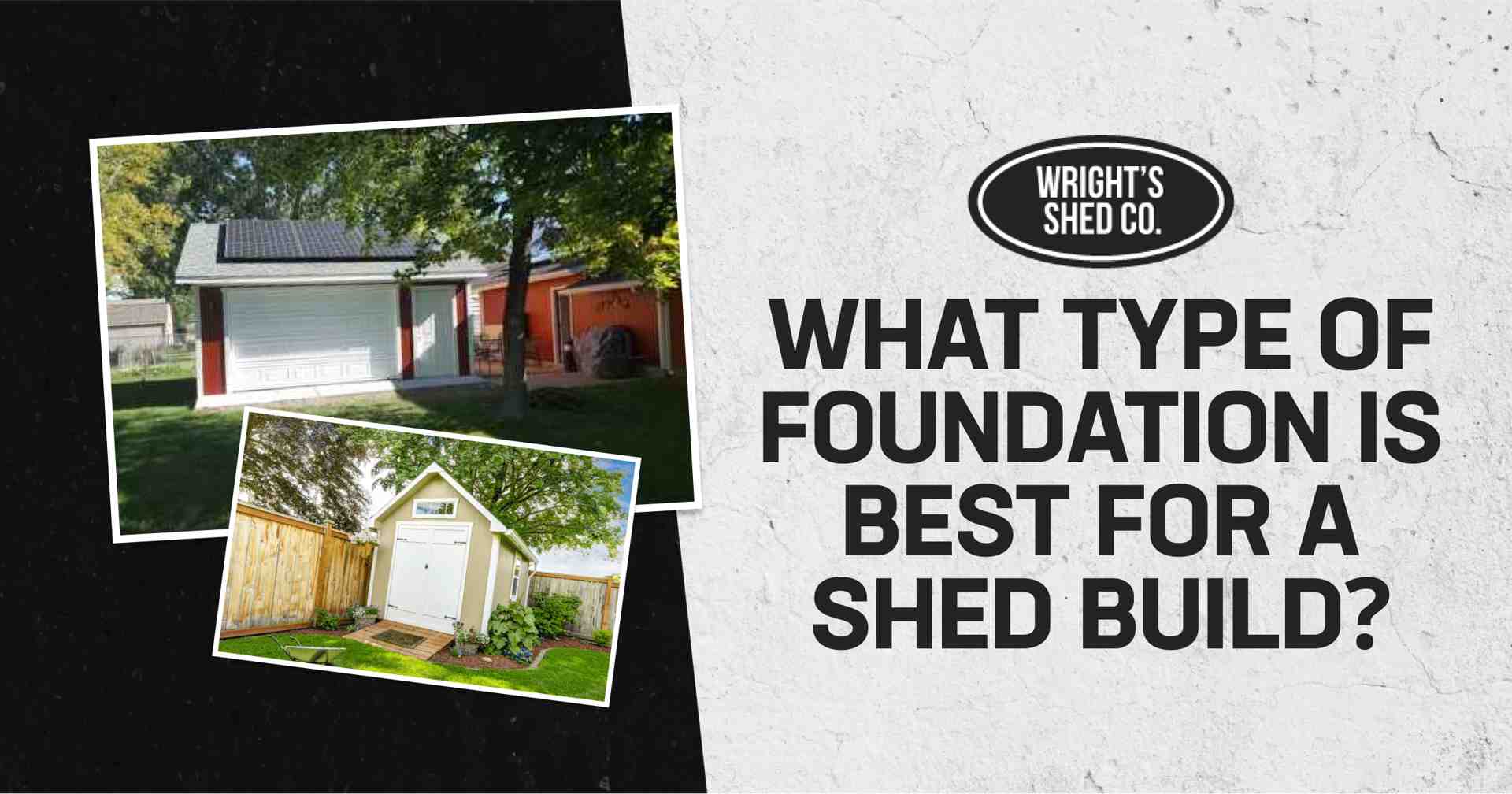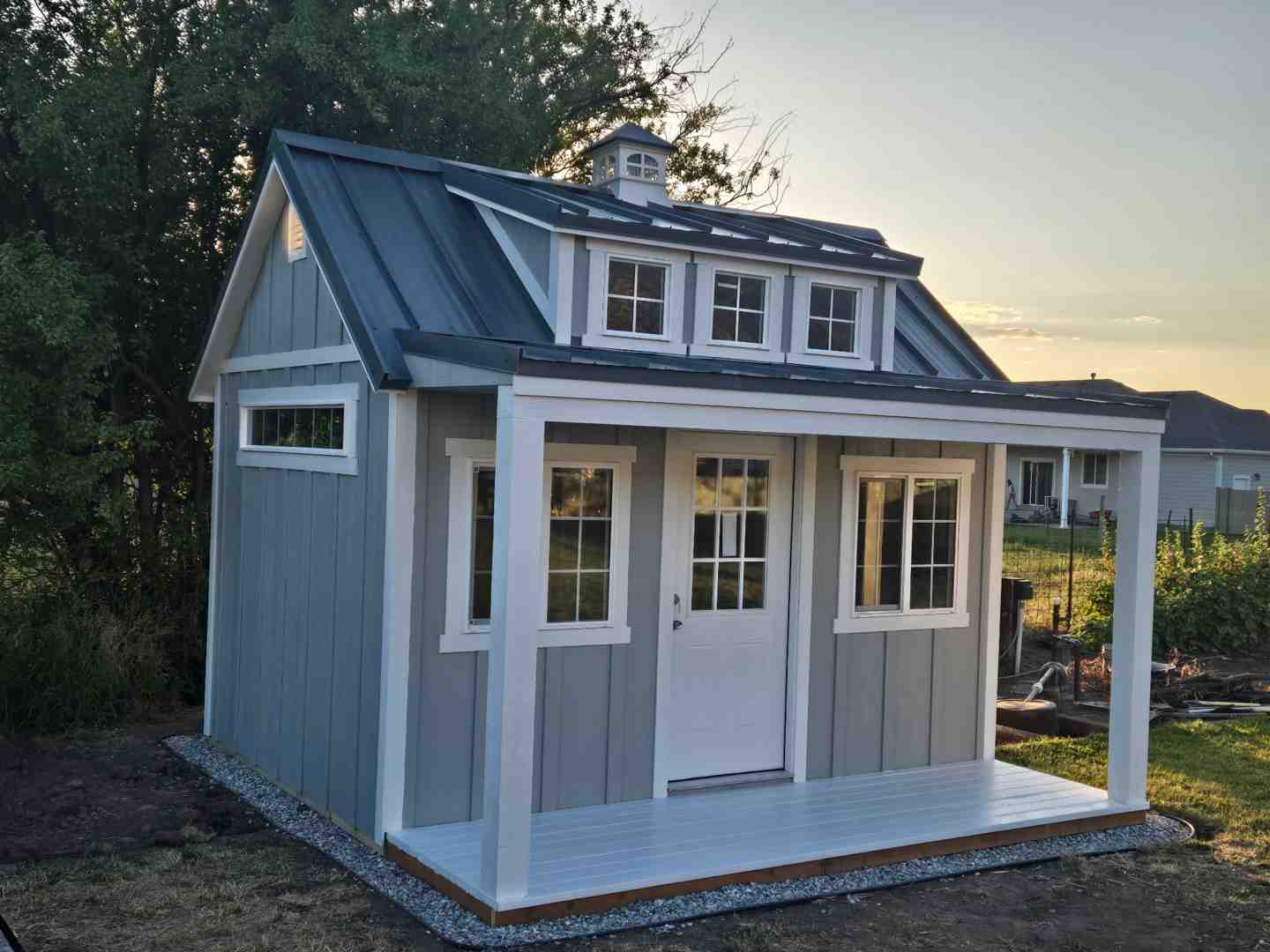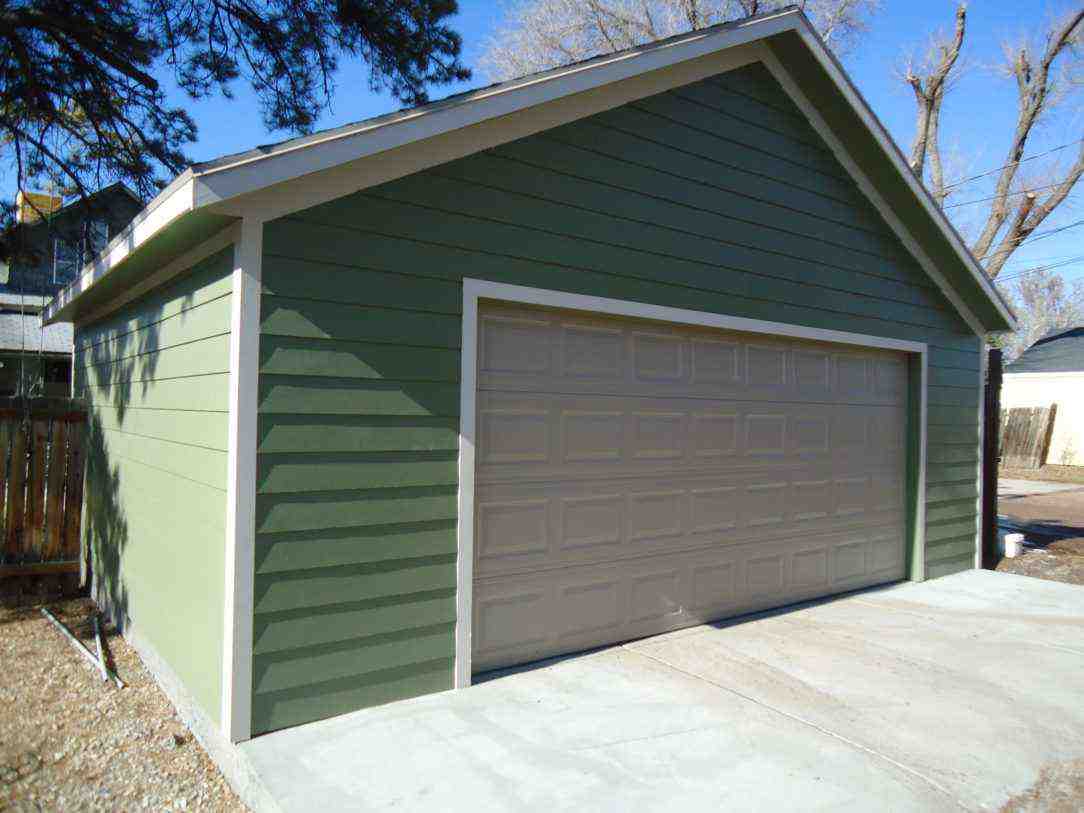Why Choosing the Right Foundation Makes All the Difference
What type of foundation is best for a shed depends on your specific needs, but here are the top three options:
- Gravel Pad Foundation: Best for most sheds with built-in floors ($1-3 per sq ft).
- Concrete Slab Foundation: Best for heavy-duty use and sheds without floors ($3+ per sq ft).
- Concrete Pier Foundation: Best for sloped ground and frost-prone areas ($2-4 per sq ft).
Imagine spending thousands on a new shed, only to see it lean, the doors stick, and the floor warp within a year.
This common nightmare is preventable with the right foundation.
A proper shed foundation does three critical things: prevents your shed from settling unevenly, protects against moisture damage, and ensures your doors and windows work properly for decades. Without one, even the highest-quality shed can become a costly headache.
Whether you’re storing lawn equipment or creating a workshop, the foundation you choose will determine if your shed lasts 5 years or 50 years. The good news? Once you understand the basics, picking the right foundation becomes straightforward.
Why a Solid Foundation is Non-Negotiable for Your Shed
Here’s the truth: having any proper foundation matters more than which type you choose. I’ve seen too many beautiful sheds turn into expensive mistakes because someone tried to skip this crucial step.
You wouldn’t build your house on bare dirt, and your shed deserves the same respect. It needs a solid, level base to call home.
Without a proper foundation, the ground will shift and settle unevenly. Doors start sticking, walls begin to warp, and floors develop annoying dips and bumps.

Shed Stability and Longevity
A good foundation keeps everything level and stable. When your shed sits on uneven or shifting ground, the problems start small but get big fast.
The frame starts to twist as one corner settles lower than the others. Your once-perfect door suddenly won’t close properly because the entire doorframe has shifted out of square. Windows that used to slide smoothly now stick halfway open. The floor develops soft spots or even cracks under the stress.
We’ve been building sheds since 1997, and I can tell you that even the strongest, best-built shed won’t last long on a weak foundation. The success or failure of your shed depends heavily on what’s underneath it. Get the foundation right, and your shed can last decades. Skip it, and you might be looking at major repairs within just a few years.
A proper foundation also protects your investment by preventing the structural damage that comes from uneven settling. Those repairs aren’t cheap, and sometimes the damage is so extensive that replacement becomes the only option.
Moisture and Rot Prevention
Here in Utah, Idaho, Iowa, and Nebraska, we deal with everything from spring snowmelt to summer thunderstorms. If your shed is sitting directly on the ground, that moisture is going straight up into your wood.
Elevating your shed 4-6 inches off the ground creates a crucial barrier against moisture damage. This air gap allows proper ventilation underneath, which keeps things dry and prevents the rot, mold, and mildew that love damp conditions.
I’ve seen sheds that looked perfect from the outside but were rotting away from the bottom up because moisture had been wicking up from the soil for years. A simple foundation would have prevented all that damage.
Pest Deterrence and Creating Usable Space
Nobody wants to open their shed door and find that mice have moved in. Direct ground contact is like rolling out the welcome mat for pests. Bugs, rodents, and other critters love to burrow under structures placed right on the earth.
A foundation creates a barrier that makes it much harder for unwanted guests to set up shop. Plus, that liftd space gives you a level, usable interior where doors swing properly and you can roll equipment in and out without fighting with uneven floors.
When a Foundation is Required
While I recommend a foundation for every shed, it’s essential for sheds larger than 8×8 feet or when the total weight exceeds 300-500 pounds. These need the stability only a proper foundation can provide.
Even if your shed comes with a built-in floor, it still needs a foundation underneath. That built-in floor is your walking surface, but the foundation provides the support, leveling, and moisture protection that keeps everything working properly.
Want to see how it all comes together? Check out our full shed building process.
On-Grade vs. Frost-Proof Foundations
When you’re shopping for foundation options, you’ll run into two main categories, and understanding the difference will save you headaches down the road.
On-grade foundations (or floating foundations) sit on or just above ground level. They’re a DIY-friendly option that doesn’t require deep digging, and you can even move them if needed. Think gravel pads or concrete blocks. These work great for most small to medium sheds in areas with stable soil.
Frost-proof foundations go deeper, extending below your area’s frost line. They’re permanent installations that can handle larger, heavier structures. Local building codes often require this type for structures bigger than 200 square feet or taller than 12 feet.
Frost heave is a major issue in our colder climates. When water in the soil freezes, it expands and pushes everything upward. When it thaws, things settle back down, but not always evenly. This freeze-thaw cycle can crack, warp, and destabilize foundations that aren’t designed to handle it.
In northern climates like ours, concrete piers that reach 32-36 inches deep can solve this problem by getting below the frost line where the ground stays stable year-round.
Exploring Common Shed Foundation Types
When it comes to what type of foundation is best for a shed, you have three tried-and-true options we’ve recommended for decades. Choosing the right one depends on your specific situation, budget, and what you plan to store.
Think of it like choosing the right pair of shoes. You wouldn’t wear flip-flops to hike a mountain, and you wouldn’t wear hiking boots to the beach. The same logic applies to shed foundations – the “best” choice depends entirely on your needs.
Here’s how the three most popular options stack up:
| Foundation Type | Average Cost (per sq ft) | Durability | Drainage | DIY-Friendliness |
|---|---|---|---|---|
| Gravel Pad | $1 – $3 | Good | Excellent | High |
| Concrete Slab | $3+ | Excellent | Poor | Moderate |
| Concrete Pier | $2 – $4 | Excellent | Good | Moderate |
After building thousands of sheds across Utah, Idaho, Iowa, and Nebraska, we’ve seen how different foundation types hold up when done correctly by local pros. Let me walk you through what makes each one special.
Learn more about foundation options here.
Gravel Pad Foundation
The gravel pad is like the reliable friend who’s always there when you need them. It’s our most popular recommendation because it works beautifully for most situations.
What makes gravel foundations so appealing is their excellent drainage. Water flows right through the crushed stone instead of pooling around your shed. This natural drainage system is a game-changer for protecting your investment from moisture damage. Plus, at $1-3 per square foot, it won’t break the bank.
If you’re the DIY type, you’ll love working with gravel. No concrete mixing, no waiting for curing – just excavate, lay your border frame, dump the gravel, and compact it down. The whole process is surprisingly straightforward.
Gravel foundations also adapt to ground shifts better than rigid concrete. When the soil moves slightly, the gravel adjusts naturally without cracking or creating stress points.
The main thing to remember is that gravel needs a border to stay put. Most professional installers use pressure-treated 6×6 timbers to create a sturdy frame that keeps everything contained and looking neat.
Gravel foundations work best for prefab sheds with built-in floors and most general storage needs. Whether you’re storing lawn mowers, garden tools, or seasonal decorations, a gravel pad provides excellent stability and protection.
Concrete Slab Foundation
If gravel is the reliable friend, concrete is the overachiever. When you need maximum durability and weight capacity, nothing beats a properly poured concrete slab.
Concrete slabs are practically indestructible when installed correctly. They can handle incredible weight loads – perfect if you’re planning to store heavy equipment, vehicles, or use your shed as a workshop with machinery. The solid surface also creates an impenetrable barrier against pests.
For sheds without built-in floors, a concrete slab is particularly smart because it serves as both foundation and floor. You get a perfectly smooth, level surface that’s easy to clean and maintain.
However, concrete does have trade-offs. Poor drainage is the biggest concern – water doesn’t flow through concrete like it does through gravel. If the slab isn’t properly sloped, you might deal with pooling water. The higher cost (starting at $3 per square foot) and complex installation also make it a bigger commitment.
Concrete can also crack over time due to ground movement or freeze-thaw cycles, which is something to consider in our climate zones.
Concrete slabs work best for large sheds, garages storing vehicles, and workshop spaces where you need that rock-solid foundation and don’t mind the higher upfront investment.
Concrete Pier Foundation
Concrete piers are the problem-solver of the foundation world. When your site throws you curveballs – like slopes, uneven terrain, or deep frost lines – piers rise to the challenge.
The beauty of pier foundations lies in their versatility for challenging sites. Each pier can be set at different heights to create a perfectly level platform, even when your yard looks more like a hillside. This flexibility makes them invaluable for tricky installations.
In our service areas of Utah, Idaho, Iowa, and Nebraska, frost-proof installation is a huge advantage. When piers are dug 32-36 inches deep (below the frost line), they create a permanent foundation that won’t be affected by freeze-thaw cycles. This makes them code-compliant for larger structures and gives you peace of mind through harsh winters.
The liftd design also provides excellent airflow underneath your shed, similar to gravel foundations, which helps prevent moisture problems.
The downside is installation complexity. While not as involved as pouring a full slab, setting piers requires precise measurements, deep digging, and careful leveling. It’s more challenging than a simple gravel pad.
Also, piers work best with sheds that have built-in floors, since they support a wooden subfloor frame rather than the shed walls directly.
Concrete piers are ideal for uneven terrain and areas with deep frost lines where other foundation types would struggle or fail to meet building codes.
What Type of Foundation is Best for a Shed?
After exploring these options, you might still wonder, “what type of foundation is best for a shed for my specific situation?” There’s no one-size-fits-all answer. The perfect foundation depends on your unique circumstances, which means you can find the ideal match for your needs and budget.
Think of choosing a foundation like picking the right pair of shoes. You wouldn’t wear flip-flops to hike a mountain or steel-toed boots to the beach. Similarly, matching your foundation to your shed’s purpose and environment is the key to long-term success and value.
Key Factors to Consider
Before you start digging or ordering materials, consider these crucial factors that will guide your decision:
Shed size and weight often determines your baseline requirements. Any shed larger than 6×8 or 8×8 typically needs a proper foundation, and if your shed plus contents will weigh over 300-500 pounds, a foundation becomes essential.
Local climate and frost depth can’t be ignored, especially here in Utah, Idaho, Iowa, and Nebraska where frost heave is a real concern. If your area experiences significant freezing and thawing, you’ll likely need a frost-proof foundation that extends below the frost line – typically 32-36 inches deep in our northern climates.
Ground conditions and slope will heavily influence your options. A flat, well-draining site opens up all possibilities, while a sloped lot might push you toward concrete piers. Clay soil that holds water creates different challenges than sandy soil that drains quickly.
Your intended use makes a huge difference. Storing lightweight garden tools? A gravel pad might be perfect. Planning a workshop with heavy machinery or a garage for your ATV? You’ll want the rock-solid stability of concrete.
Budget considerations are always real, but your foundation protects your entire investment. Gravel pads are the most budget-friendly, concrete piers fall in the middle, and concrete slabs typically cost the most upfront.
Local building codes and permits might make the decision for you. Many areas require specific foundation types for larger sheds (over 200 square feet or taller than 12 feet), and permit fees can range from $50 to $250. Always check with your local building department before breaking ground.
What type of foundation is best for a shed with a built-in floor?
If your shed comes with a built-in wooden floor, we almost always recommend a gravel pad foundation.
Gravel pads provide excellent drainage, which is crucial for protecting that wooden floor frame from moisture and rot. The gravel allows water to flow through freely while creating proper air circulation underneath – exactly what wood needs to stay healthy for decades.
Sizing your foundation correctly makes all the difference. You’ll want your gravel pad to extend beyond your shed’s footprint – make it 2 feet longer and 2 feet wider than your shed walls (with a minimum of 12 inches extra on all sides). For a 10×12 shed, plan for a 12×14 gravel foundation.
This extra perimeter isn’t just for show – it prevents rain splash-back that would otherwise hit your shed’s sidewalls with mud and debris. This simple step keeps your shed cleaner and provides additional protection from moisture damage. The larger footprint also promotes consistent airflow around the entire base.
Building a gravel pad is also one of the most DIY-friendly options. For detailed guidance, check out our DIY shed base guide.
What type of foundation is best for a shed without a floor?
When your shed kit doesn’t include a built-in floor, or you’re planning a custom build where the foundation doubles as your interior surface, a concrete slab foundation is typically the best choice.
A concrete slab serves double duty – it’s both your foundation and your shed’s floor rolled into one durable, smooth surface. This makes it perfect for workshops, garages, or any space where you want an easy-to-clean, pest-proof interior.
Sizing is different for concrete slabs. Your concrete should match the exact dimensions of your shed walls. Unlike gravel pads, you don’t want concrete extending beyond your shed’s footprint because this creates ledges where water can collect and potentially drain back toward your shed walls.
The slab becomes your integrated floor, eliminating the need for additional flooring materials while providing maximum durability and weight capacity. To ensure stability and wind resistance, anchoring your shed walls directly to the concrete is essential. This is typically done with anchor bolts embedded during the concrete pour or with concrete screws after curing.
This approach gives you the most robust, low-maintenance interior possible – perfect for serious workshop use or vehicle storage.
Frequently Asked Questions about What Type of Foundation is Best for a Shed
At Wright’s Shed Co., we’ve fielded countless questions about shed foundations from homeowners across Utah, Idaho, Iowa, and Nebraska. Getting the foundation right makes a huge difference in our customers’ long-term satisfaction with their sheds.
Let me share the answers to the questions we hear most often, based on nearly three decades of building experience.
How high should a shed be off the ground?
The ideal height is 4 to 6 inches. This elevation, created by the foundation, allows for proper air circulation underneath the shed, which prevents moisture buildup, rot, and pest infestations.
That 4-6 inch sweet spot gives you enough clearance for air to move freely while still keeping your shed low enough that it doesn’t feel like you’re climbing into a treehouse every time you need your lawnmower.
Can I just put my shed on cinder blocks?
While a cheap and easy option, placing a shed directly on cinder blocks is not recommended for a long-term solution. Blocks can settle unevenly over time, causing the shed frame to warp, doors to stick, and creating stress points that can lead to structural failure.
I get it – cinder blocks seem like a shortcut. They’re cheap and you can set them up in an afternoon. But those blocks start sinking into the ground at different rates. Maybe the block under the front left corner sinks faster where water collects. Suddenly your shed is doing a slow-motion twist.
The result? Your door starts sticking. Your windows won’t close properly. And eventually, you’re looking at expensive repairs. What type of foundation is best for a shed that you want to last? Definitely not individual blocks on unprepared ground.
For any shed you’re serious about keeping for years, invest in a proper foundation from the start. Your future self will thank you when your door still opens smoothly a decade later.
How much does a shed foundation cost?
Costs vary by type and size. A gravel pad is the most budget-friendly, typically costing $1-$3 per square foot. A concrete slab is more expensive, starting at $3 per square foot and increasing with thickness and reinforcement.
For a typical 10×12 shed (120 sq ft), a gravel pad might run you $120-$360 in materials, while a concrete slab could start around $360 and go up from there depending on thickness and reinforcement.
Concrete pier foundations usually fall somewhere in the middle at $2-$4 per square foot, though labor can add to the total cost.
Here’s the perspective I always share with customers: yes, a proper foundation costs money upfront. But compare that to the cost of replacing a shed damaged by moisture, pests, or structural problems from poor support. I’ve seen customers spend thousands on a beautiful new shed, then try to save a few hundred on the foundation – only to need major repairs within a few years.
The foundation isn’t just an expense; it’s insurance for your investment. And when you consider that a good foundation can help your shed last 30-50 years instead of 5-10, the math becomes pretty clear.
Your Shed’s Success Starts with the Best Type of Shed Base
After 27 years of building custom sheds across Utah, Idaho, Iowa, and Nebraska, I’ve learned a fundamental truth: choosing what type of foundation is best for a shed is about understanding your unique situation to protect your investment for decades.
Think of your foundation decision as choosing the right pair of shoes for a long hike. You wouldn’t wear flip-flops on a mountain trail. Similarly, each foundation type serves a specific purpose and excels in particular conditions.
Gravel foundations shine when you need excellent drainage and cost-effectiveness. They’re the reliable workhorses of the foundation world, perfect for most storage needs and sheds with built-in floors.
Concrete slabs deliver permanence and strength when you’re building something that needs to last generations. If you’re creating a workshop or storing vehicles, concrete provides a rock-solid foundation that won’t budge.
Concrete piers excel as problem-solvers for challenging situations like sloped yards or deep frost lines. Piers adapt to these challenges while providing the stability your shed needs.
The truth is, there’s no universal “best” foundation because every shed project is unique. Your local climate, soil conditions, intended use, and budget all play crucial roles in determining the right choice. What matters most is matching your foundation to your specific needs.
At Wright’s Shed Co., we’ve seen how the right foundation transforms a good shed into a great investment. Since 1997, we’ve built thousands of structures that stand strong because they started with solid foundations. Our upgraded features come standard, and we back our craftsmanship with warranties up to 50 years because we know that quality begins at ground level.
Your shed’s success truly does start from the ground up. Take the time to choose wisely, and you’ll enjoy your shed for decades to come.
Explore foundation types for your shed




